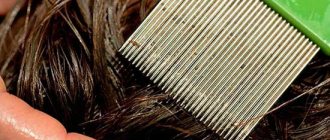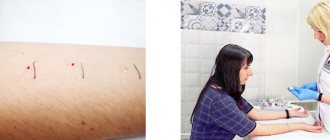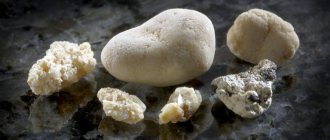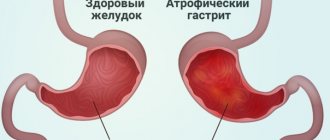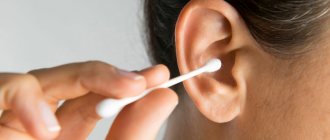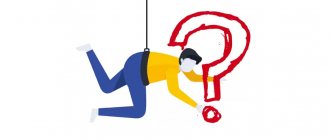ARVI, colds, cough, sore throat and stuffy nose are a condition that is difficult for an adult to bear, let alone a child. One of the effective ways to treat viral diseases and alleviate their symptoms is nebulizer therapy. Inhalations for children are effective, quick and painless: often a child would be more willing to “sit” with a nebulizer for 5 minutes than to take a tasteless medicine. The use of an inhaler will be useful at various stages of the disease: the device converts the drug into tiny particles (aerosol) that can penetrate directly to the site of the disease, be it the bronchi or lungs. It is this targeted effect that makes inhalations so effective in treating children.
The mesh nebulizer (electronic mesh) will be the most convenient to use, because it has a number of undeniable advantages over other types of devices (compressor, ultrasonic, steam):
- the mesh nebulizer does not destroy any drugs during operation (for example, many effective solutions are not compatible with ultrasonic devices for this very reason);
- inhalers of this type can be used with all medications, except those created on an oil basis (the reason for this is not only the technological feature of the device, but also safety - oil solutions are dangerous for inhalation and have a number of very serious contraindications);
- these devices operate silently, do not frighten or irritate the child - when they feel unwell, children are especially sensitive to irritants;
- The mesh nebulizer is small in size and can be powered either by batteries or from the mains - you can always take the device with you if necessary, or simply carry out inhalation in the comfort of your home, sitting comfortably.
Content:
- Preparation of equipment
- Preparing the medicine
- Procedure technique
- Inhalation for children
An inhaler is a device that allows you to deliver a fine aerosol of medicinal substances into the lungs and upper respiratory tract. It is used for cough, difficulty breathing, hoarseness, rhinorrhea, chest pain caused by bronchitis, and difficult sputum discharge. Bronchodilators, antiseptics and antibiotics, mucolytic medications, regenerative agents, decoctions and infusions of medicinal herbs, and moisturizing substances are administered using the aerosol method. People prone to inflammatory diseases of the upper respiratory tract need to know how to use the inhaler correctly.
Equipment and drugs for inhalation
Inhalations are of the following types:
- Steam. Breathe over potatoes, a kettle or other source of steam. This helps warm the nasal passages and throat. It is not necessary to use medical inhalers and medications. Sometimes medicinal herbs are added to boiling water, for example, St. John's wort, chamomile, eucalyptus.
- Dry. The patient breathes in the medicine in powder form. Special sprayers are used.
- Heat-moist. Performed using a compressor. Patients breathe moist, hot air.
- Aerosol. The drug is sprayed through a nebulizer or can.
- Oily. Hot vegetable oil is poured into the inhaler. The substance relieves inflammation and irritation of the mucous membrane.
Preparation of equipment
Before using the inhaler, you should perform a number of preparatory steps:
- Rinse the face mask, connecting hose and nebulizer chamber with clean water and dry.
- Treat elements in direct contact with the patient with an aqueous solution of chlorhexidine or miramistin.
- Assemble the device in accordance with the instructions.
- Fill the reservoir with a pre-prepared medicinal solution and place it in a vertical position.
The tank capacity for steam varieties is 70-100 ml, for compressor and ultrasonic varieties - 2-8 ml. If the maximum permissible volume is exceeded, liquid enters parts of the device that are not intended for this purpose and can damage the inhaler.
Common errors when using
If you have not previously had the need to perform inhalations, during the first use you may encounter errors with the choice of inhalation product, with assembly, or during the procedure.
Let's look at the most popular of them.
- Do not handle the device if it is used by one person. It is necessary to wash the inhaler - residual medication harms the device, and remaining bacteria can lead to recurrent illness.
- Pull out the bumper or insert it incorrectly into the nebulizer chamber. The bumper turns the liquid into an aerosol, and thanks to it the device performs its main function - it allows the medicine to penetrate to the source of inflammation.
- Pour anything - including suspensions and herbal infusions. And also replace saline solution with mineral water. It is recommended to use only those medications prescribed by your doctor and those recommended for use by the manufacturer.
Due to an incorrectly inserted bump stop, the procedure becomes meaningless. How to install the bump stop correctly, see the instructions for the device - different manufacturers have different designs.
Preparing the medicine
Working solution
for compressor and ultrasonic type nebulizers, it is made from a mixture of the main drug with physiological sodium chloride solution. Typically, the combination is prepared in a ratio of 1 part of the drug to 3 parts of NaCl, however, the attending physician may recommend other mixing options. When coughing, use alkaline mineral water or herbal decoctions. The product must be heated to 37-38°C.
Solutions intended for steam inhalation are not heated. Devices of this type allow you to work only with herbal remedies, mineral water and essential oils (sandalwood, cedarwood, eucalyptus). It is also permissible to use an inhaler with pure saline solution. Medicines heated to 60-70°C are destroyed and have no effect.
On a note
: when the body temperature is above 37°C, steam inhalations are not performed. Cold steam procedures are not recommended for use in cases of inflammatory diseases of the middle ear.
How to use the inhaler
Before using the inhaler for its intended purpose, you will first need to carefully study the instructions in order to avoid annoying mistakes that will lead either to equipment breakdown or to a decrease in the effectiveness of inhalation treatment. The technique for using different types of nebulizers may differ slightly, but there are still common features of using this device.
You need to fill the inhaler container with a medicinal substance that dissolves in a sodium chloride solution in a 1:1 ratio. For one session you will need only 3-6 ml. It is very important to remember that you cannot use boiled or distilled water to dissolve the medicine, only saline solution. Also, never try to simply crush the tablet and stir it into the solution. Nebulizers only contain inhaled medicines, which are sold online in ready-made form.
Then the inhaler is closed, and a mask or mouthpiece is attached to the outlet, after which the device is turned on and a session is carried out in open valve mode for 5-20 minutes, until the solution stops being converted into an aerosol. In this mode, aerosol particles with a diameter of 2 to 10 microns are formed, but if the plugs are closed, the dispersion of the particles is reduced to 0.5-2 microns. This mode is considered economical and faster; it helps to cover the most remote areas of the bronchial tree.
Breathing during inhalation should be free and normal, because excessive inhalations can provoke coughing attacks and cause irritation of the mucous membrane of the respiratory tract. At the end of the session, the nebulizer turns off and is disconnected from the compressor. All components that have had contact with the medicinal solution and the oral cavity are thoroughly washed in hot water using a disinfectant and washing solution. After which these parts are rinsed and dried with a soft cloth or even a hairdryer. By the way, even the longest inhalation procedure will not be able to use the entire medicinal solution. There is always a residual volume of 1 milliliter.
Procedure technique
1 hour before and for an hour after the procedure, you should not eat, smoke, use expectorant medications, or gargle with antiseptic solutions. The duration of one inhalation should not exceed 7-10 minutes. It is forbidden to talk during treatment. It is permissible to take up to 5-6 inhalations per day, the average number is 2-3 episodes of treatment using different medications. The interval between them is 1.5-3 hours.
To understand how to do inhalations with a nebulizer, you need to remember the following algorithm:
- Place the device in a stable position.
- Sit comfortably and relaxed in a chair or on a bed.
- Place the mask tightly on your face or wrap your lips around the mouthpiece.
- Turn on the device.
- Breathe evenly and deeply, inhaling through your mouth and exhaling through your nose. After inhaling, it is recommended to hold your breath for 2 seconds.
- After completing the procedure, rinse your mouth with water.
- Wash the washable parts of the device, dry it and put it away for storage.
Steam inhalers are easy to use. You need to pour the medicine into the reservoir, turn on the device and press your face tightly to the mask. Before breathing with a steam-type inhaler, you must make sure that there are no contraindications: hyperthermia, bleeding, swelling of the respiratory tract. The duration of the procedure reaches 15-20 minutes. Inhalations are taken slowly to avoid burns from hot steam. After completing therapy, you need to refrain from leaving the house for 1-3 hours, especially in the cold season.
On a note
: deep breathing can provoke hyperaeration phenomena: dizziness, weakness, incoordination. To avoid this, short breaks are required during inhalation.
What are inhalers and how do they work?
There are many types and models of inhalers in the pharmacy chain, all of them have a similar design. Currently, three main types of inhalers are used in medical practice: steam, ultrasonic and jet. The last two are united by the term “nebulizers” from the Latin word nebula - fog, cloud. They generate not vapors, but a stream of aerosol consisting of microparticles of the inhaled solution.
The inhaler includes a main unit that generates a stream of air that creates a medicinal aerosol of the required dispersion. In the main block there is a chamber in the form of a plastic glass with a volume of 5-10 ml, into which the medicinal solution is poured.
The container contains a damper with two outputs, one of which leads to the device itself, and the second is the output. A tube, mouthpiece or mask is attached to this hole, into which an aerosol of medium and low dispersion is supplied. Coarsely dispersed solutions lead to rapid breakdown of the device and a decrease in the effectiveness of treatment. Nebulizers may include special mouthpieces, children's masks, nasal attachments, sprayers, and a mouthpiece.
Inhalation for children
Inhalation for children under 5 years of age must be carried out in compliance with certain rules:
- duration - no more than 3 minutes;
- only the face mask is used, not the mouthpiece;
- the solution temperature does not exceed 30°C.
- when working with an infant, you should hold him and press the mask tightly to his face;
- nebulizer inhalations are allowed during sleep.
Doses of drugs for the working solution vary depending on the age of the child. It is difficult to choose them wisely without a medical education. Therefore, it is unacceptable to use aerosol products without consulting a doctor.
The inhaler is a modern and effective means of treating diseases of the respiratory system. However, its illiterate use can lead to the development of severe complications: meningitis, pneumonia, laryngeal edema. For the procedure to benefit the patient, you need to know how to use the inhaler correctly.
Contraindications are:
- Spontaneous pneumothorax
- Common and bullous forms of emphysema
- Bronchial asthma with frequent attacks
- Pulmonary heart failure stage III
- Pulmonary hemorrhage
- Arterial hypertension III degree
- Severe atherosclerosis of coronary and cerebral vessels
- Inner ear diseases, tubotitis, vestibular disorders
- Atrophic rhinitis
- Epilepsy
- Individual intolerance to the drug
Tips for use
- Before use, it is necessary to wash the inhaler parts.
- Parts in contact with a sick person should be thoroughly disinfected (with an aqueous solution of chlorhexidine or miramistin).
- Assemble the inhaler.
- It will be filled out by special solution.
- Solutions intended for steam inhalation are not heated.
- Before using the inhaler, it is better to avoid eating and smoking.
- During one operation, the use should not exceed 7-10 minutes, and the inhaler should not be used more than 5-6 times a day.
- During the procedure, inhalations should be slow.
Groups of inhalation drugs:
- Antiseptics (Furacilin, Dioxidin, Miramistin)
- Antibiotics (Gentamicin, Tobramycin)
- Anesthetics (Lidocaine)
- Hormonal drugs (Cromohexal, Budesonite, Pulmicort, Dexamethasone)
- Immunomodulators (Interferon, Derinat)
- Mucolytics (Fluimucil, Lazolvan, Ambroxol, Ambrohexal, Pulmozyme, Acetylcysteine)
- Bronchodilators (Berodual, Fenoterol, Ventolin, Berotek, Salamol)
- Herbal medicine (Rotokan, Tussamag, Chlorophyllipt)
- Vasoconstrictors (Adrenaline, Naphthyzin)
- Alkaline and saline solutions (0.9% saline solution, Borjomi mineral water)
For what diseases are inhalations used?
The most common reason for using inhalations is the common cold and its associated symptoms. In addition to the usual ARVI, the method is used to treat bronchitis, pneumonia, as well as bronchial asthma, and in each specific case there are features:
- steam and ultrasonic inhalers can be used to treat diseases of the upper respiratory tract
- Nebulizers
are used to treat diseases of the upper, middle and lower respiratory tract. The reason is that such inhalers allow different degrees of dispersion of aerosol particles, including very high, and the smaller the particles, the easier it is for them to reach the bronchi or lungs.
Lower respiratory tract infections most often require either observation in a hospital or regular visits to doctors, who will give recommendations on the use of inhalations.
Common questions about inhalation
Is it possible to give inhalations to children? Yes, you can. Moreover, this method is used for children almost more often than for adults (with the exception of some diseases that occur in adults that require constant use of inhalers, for example asthma). But when using inhalers, you should be careful: take into account the type of inhaler and your doctor's recommendations.
What inhalations can be given to children? Depends on what kind of illness the child is suffering from. Diseases, which include infections of the upper, middle and lower respiratory tract, require the use of drugs that relieve spasm of the respiratory tract, swelling and inflammation, and have an expectorant effect, which only a doctor has the right to prescribe.
Are all inhalations the same? No, not all, and the differences are not limited to the active ingredient. There is such a thing as dispersion - how small particles are suspended in the air that the patient inhales. The depth of penetration of the substance depends on this indicator: some will settle in the nose, some will reach almost the lungs. For specific diseases, recommendations should be given by a doctor, but you should not experiment on your own.



